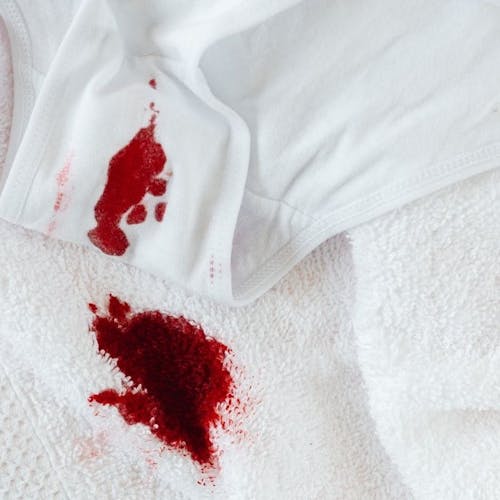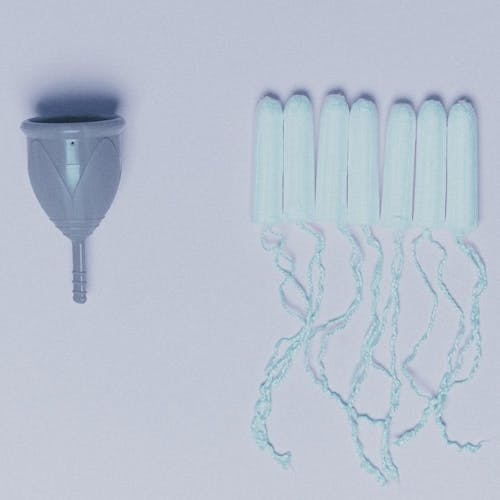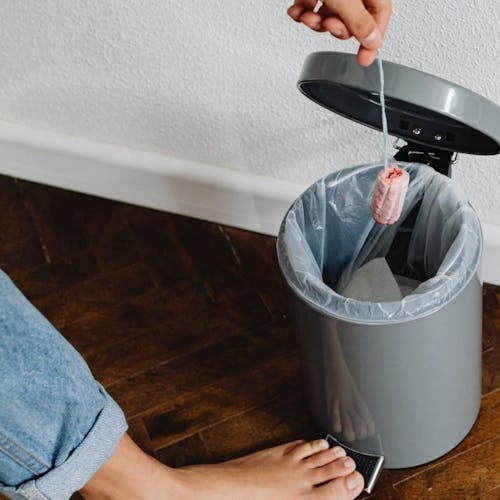This website uses cookies to enhance the user experience. By using Yoppie you are agreeing to our use of cookies.
A Brief History of Menstrual Hygiene
Written by Yoppie
04 May 2020
Let’s go back to ancient times…
Did someone say “period”?!
Hello, tampons!
Menstrual marvels
Modern menstruation
Ever watched a period drama (the historical kind, not the Carrie kind) and wondered what women wore under all those layers to keep their menstruation in check? Nowadays we have lots of options to choose from, but throughout history, things haven’t always been so easy for us girls.
Whether due to lack of medical knowledge, or reluctance to mention ‘unmentionables’, there was undoubtedly a lack of innovation over the years when it came to women’s menstrual cycles. Here, we’re breaking down the menstrual hygiene highlights.
Let’s go back to ancient times…
The truth is, not much is known about periods in ancient times. It would be fascinating to discover how our ancient sisters handled their business back then, but due to lack of documentation, we may never find out. Most of the people keeping logs of life in ancient times were men, and as you can probably imagine, they either didn’t think it necessary to record it, or they didn’t care to discuss such intimate goings-on with the ladies in their lives. Or perhaps the women didn’t want to. Either way, Bridget Jones's Diary would have come in pretty handy back then.
Over the years, however, a few theories have emerged from scientific findings. Some think that women created their own "menstruous rags", as they are referred to in the Bible, and these can be found in varying forms depending on the country of origin.
While this theory is still disputed, the ancient Greek physician Hippocrates supposedly referred to small wooden sticks wrapped with soft lint thought to be inserted into the vagina as a sort of early tampon-like device. Similarly, Egyptian women are said to have made tampons from papyrus fibres, while Roman women would weave a tampon using soft cotton. Far more likely is the theory that Roman women lined their undergarments with absorbent cotton pads.
Did someone say “period”?!
In years gone by - and in cultures all around the world - periods were seldom mentioned, which makes it difficult to track how women, and society in general, viewed them. In 1671, a midwife called Jane Sharp recorded the following note on periods:
“Sometimes flow too soon, sometimes too late, they are too many or too few, or are quite stopt that they flow not at all. Sometimes they flow by drops, and again sometimes they overflow; sometimes they cause pain, sometimes they are of an evil colour and not according to nature; sometimes they are voided not by the womb but some other way; sometimes strange things are sent forth from the womb.”
This fascinating glimpse into the mystery of periods around this time, and their potentially evil nature, allows us to better understand why it took so long for the period products we know now to emerge from the misconceptions and misdirected shame of medieval menstruation, and for centuries after.
The term “period” wasn’t actually used in a medical context until 1822, and soon after, society began to understand the necessity of having alternative methods of controlling menstruation other than just bleeding through your clothes, especially if they were going to continue shrouding the subject in secrecy.
It was in this century that the Hoosier Sanitary Belt became popular. Much like the name suggests, this contraption was indeed a thick belt that held a washable cloth pad between women’s legs, and yes, it was as uncomfortable and ridiculous as it sounds. More innovation was clearly needed, and so in 1888, Johnson & Johnson brought Lister’s Towels to mass market - the first disposable pad. By far one of the best options available to women at the time, it was surprisingly unsuccessful due to the taboo nature of periods back then. Period products existed, but women couldn’t be discreet enough when buying them, so Lister’s Towels sales dwindled.
Hello, tampons!
Nurses providing care to soldiers during WW1 discovered the miraculously absorbent nature of the cellulose they used to bandage wounds, and soon began using this cheap and easily disposable material to absorb period blood. The very same material was used to create the first commercially available sanitary pad, which became a popular choice for many women.
Still, a more streamlined way of collecting menstrual blood was thought up in 1929, when Dr. Earle Haas developed the first official applicator tampon, and a new way of handling monthly menstruation was born. Over the next 50 years, various versions of the tampon emerged, and designs continued to improve.
Menstrual marvels
Finally, it was time for something even more discreet. In 1950, O.B. launched their applicator-free tampons in Europe, which became hugely popular due to their smaller size. This meant they were easy to carry around unnoticed in a handbag.
The road to perfect period products didn’t always go smoothly, however. In the 1970s, consumer goods corporation Procter & Gamble launched what they deemed the “world’s most absorbent tampon”, made from a synthetic material that could supposedly be inserted and left in the vagina for the length of an entire period. Today we know how dangerous this can be. The company spent 5 years dealing with over 800 cases of TSS (toxic shock syndrome), and P&G wisely pulled them off the shelves. Yikes!
Believe it or not, all this time (and even as recently as the 1980s) the Hoosier belt was still in circulation, although by the 80s it had almost completely vanished, with most women preferring new pads with sticky strips that made them easy to attach to the inside of underwear.
Modern menstruation
Sanitary products today are so much safer and more effective than their historical counterparts, and with periods more widely accepted and talked about, more innovative designs and safer materials are being implemented, much to the delight of us women.
Though it’s not the case yet in some parts of the world, and the fight against period poverty continues, menstrual hygiene products continue to advance. Women are now more free than ever before, and can become more empowered to live life without periods holding them back.
What do you think of our history of sanitary products? Do you know of an interesting historical fun fact you’d like to share? We’re all ears over on Instagram @itsyoppie! Meanwhile, the next evolution in period care is here: our personalised full cycle menstrual care subscription box can get organic cotton tampons, PMS supplements, and much more, delivered easily and regularly through your letterbox. Who needs a supermarket anyway?
Section jump
Back to top
Subscribe To Our Newsletter
YOPPIE





© 2026 Yoppie is a registered trademark of Phlo Technologies Ltd.
Yoppie's supplements are not a substitute for a varied diet and healthy lifestyle and are not intended to diagnose, treat, or cure any disease. If you are pregnant, breastfeeding, have a medical condition or are under medical supervision, please consult with your doctor before taking any of our products.






